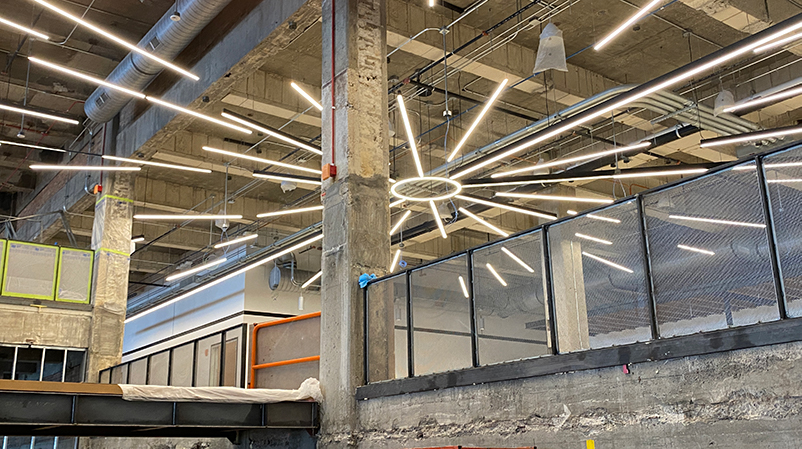Once heralded as the world’s largest post office, the massive 2.5 million-square-foot structure at 433 W. Van Buren St. in Chicago stood unused and empty for nearly a quarter of a century. As part of the largest adaptive reuse project in the nation, it’s now transforming into new downtown office space, with Walgreens as one of the first tenants in one of the best parts of the building – spanning the entire fourth floor with windows on both sides.
The gargantuan 1921 art deco structure is just a few miles from the first downtown Walgreens location, and almost as old as the company itself. Modernized technologies and cool amenities (a ping-pong room! salad vending machines!) have brought the historic building into the 21st century, while preserved relics such as mail chutes and postal scales maintain its legacy.
As a member of the Walgreens creative team, I was one of the first team members to move in and experience these new workplace features – from hydraulic desks to smart elevators. Here’s my account of my first day working in the new Old Post Office space.
8:48 a.m. Already lost, I start to wander across the football-field-sized lobby, taking in its grand presence. Adorned with polished marble floors and giant windows, it’s chic enough to host a wedding (in fact, I later find out that some are already booked). I blindly follow some folks and end up in another company’s office.
10:33 a.m. With this location serving as the the digital headquarters of our company, we are eager to see how an updated office can inspire innovative ways to help our customers manage their health conditions. For our first team brainstorm, we lounge on a couch, dim the lights, wirelessly project our screens and draw out concepts on whiteboard walls. This is in large contrast to the sterile surroundings and sometimes constricting technology we had in our former office.
12:44 p.m. Ah, lunchtime! I venture out into the neighborhood, and after locating the nearest coffee shop and Walgreens (essentials), I’m pleasantly surprised to find a handful of tasty chain and local restaurant options, some with great views of the nearby river. Food amenities are coming soon to the Old Post Office, but in the meantime, other co-workers try the new Farmer’s Fridge vending machine located in one of our kitchenettes, stocked with fresh salads, sandwiches and snacks – a tasty option when time (or the temperature outside) is low.
1:53 p.m. Locating my desk after lunch is like trying to remember where I left my car in the Soldier Field parking lot. Dozens of first-come, first-served workspaces allow you to choose between a variety of options: from empty tabletops to areas that hook up to PC or Mac monitors. Some even have the ability to transform into a standing desk at the push of a button. Each department is assigned a “neighborhood,” named after notable Chicago neighborhoods such as Pilsen and Bronzeville. The walls framing each section are marked with bold murals, created by local artists from the respective neighborhoods. Within conference rooms, I find framed Chicago-themed photography, drawings and paintings – the work of our very own team members.
4:52 p.m. As the first day winds down, I throw my coffee mug and keyboard into my assigned drawer space and head to the second floor to check out the building’s 80,000 square feet of shiny new amenities. Among the features are a chic bar with a bocce court, quiet library lounge with fireplaces and tufted leather loveseats, mini market with homemade snacks and a tenants-only gym that’s $150 for a one-year membership. In a future phase, this building will also include more food options and a physical Walgreens store. The surrounding walkways will feature the “Innovation Hall,” showcasing some of the most inventive work throughout the company’s history.


